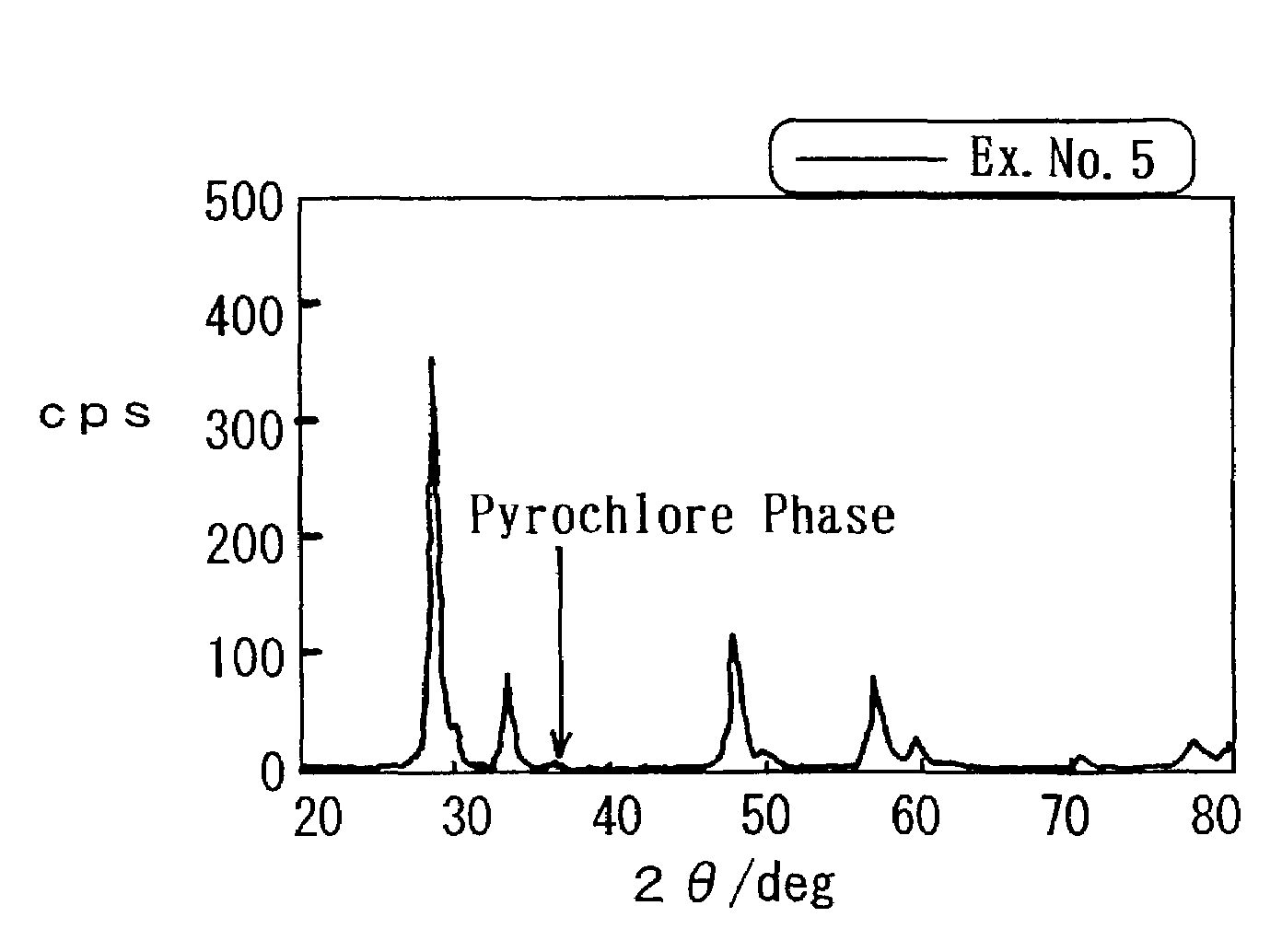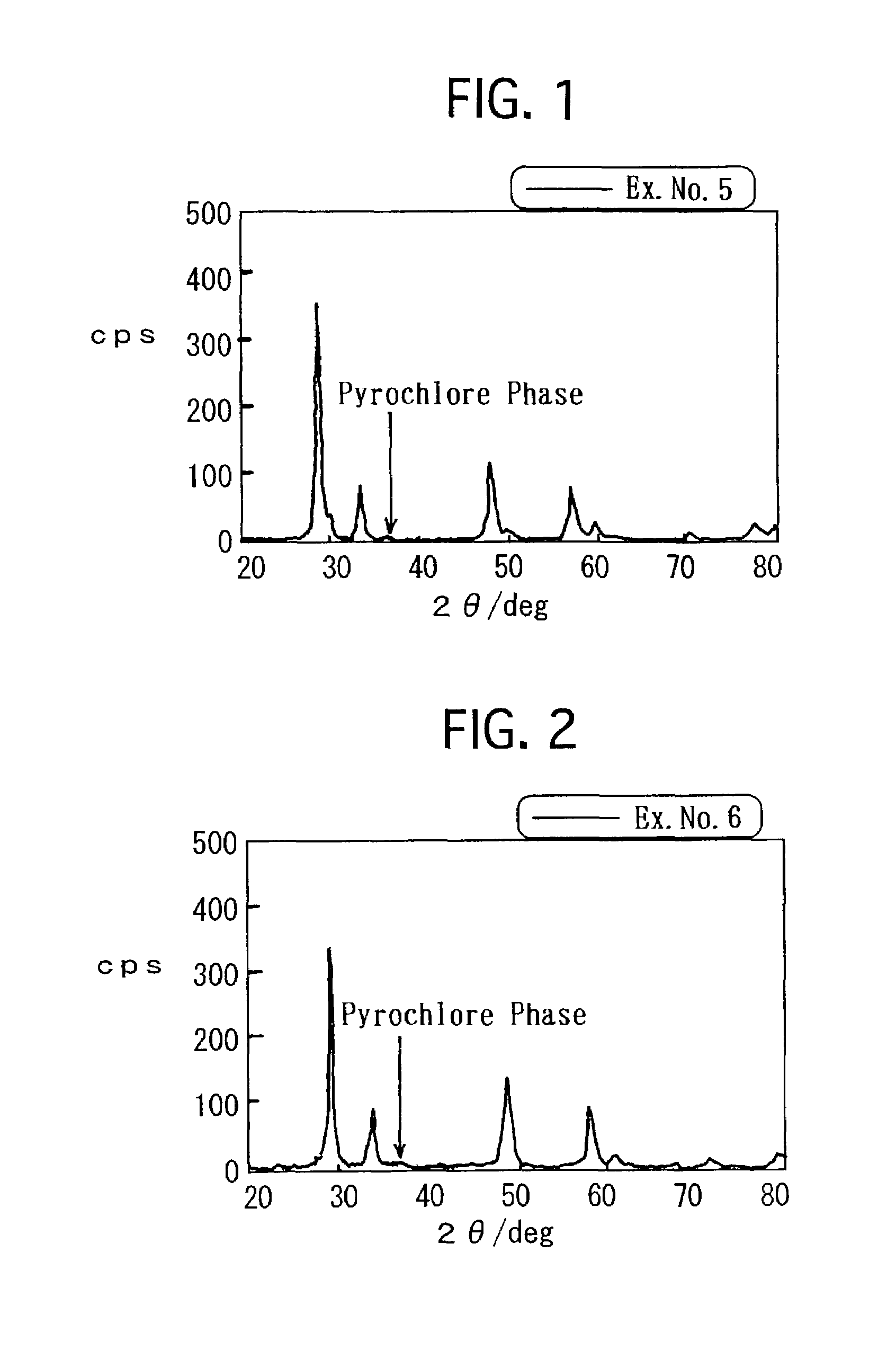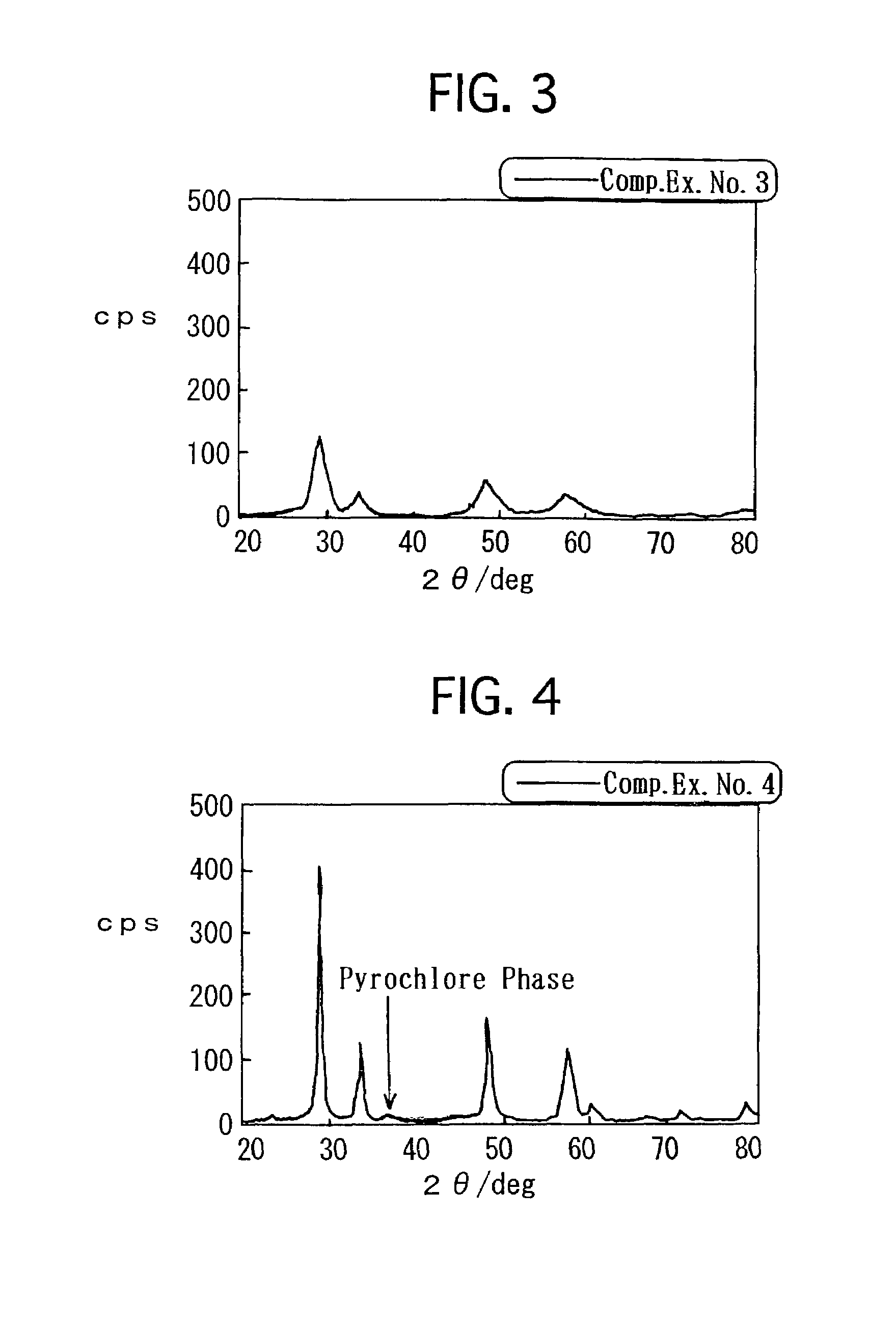Composite oxide, process for producing the same, and exhaust gas reducing co-catalyst
- Summary
- Abstract
- Description
- Claims
- Application Information
AI Technical Summary
Benefits of technology
Problems solved by technology
Method used
Image
Examples
examples
[0064]Hereinafter, the present invention will be described in detail with reference to specific examples and comparative examples.
example no.1
Example No. 1
[0065]Aluminum nitrate nona-hydrate (Al(NO3)3.9H2O), cerium nitrate hexa-hydrate (Ce(NO3)4.6H2O) and zirconyl oxynitrate di-hydrate (ZrO(NO3)2.2H2O) were solved in pure water in predetermined amounts, respectively. While stirring the mixture aqueous solution vigorously, ammonium water was added to the mixture aqueous solution. The ammonium water included NH3 in an amount as much as 1.2 times by mole for the neutralization equivalent of the respective nitrates. After the thus precipitated precursors were evaporated to dry at 150° C., the precursors were further dried at 300° C. for 3 hours. Thereafter, the precursors were calcined at 500° C. for 1 hour, and were further heat-treated at 700° C. for 5 hours. Thus, a ternary composite oxide was prepared. Note that the composition ratio of the composite oxide was Al2O3:CeO2:ZrO2=1:0.9:1.1 by mol.
[0066]Then, an aqueous solution of platinum (II) dinitro diammine having a predetermined concentration was impregnated into the res...
example no.2
Example No. 2
[0068]Except that the ternary composite oxide, on which Pt was loaded in the same manner as Example 1, was reduced in the N2 gas atmosphere, which included H2 in an amount of 5% by volume, at 900° C. for 5 hours, a pelletized co-catalyst of Example No. 2 was prepared in the same manner as Example No. 1.
PUM
| Property | Measurement | Unit |
|---|---|---|
| Temperature | aaaaa | aaaaa |
| Specific surface area | aaaaa | aaaaa |
| Specific surface area | aaaaa | aaaaa |
Abstract
Description
Claims
Application Information
 Login to View More
Login to View More - R&D
- Intellectual Property
- Life Sciences
- Materials
- Tech Scout
- Unparalleled Data Quality
- Higher Quality Content
- 60% Fewer Hallucinations
Browse by: Latest US Patents, China's latest patents, Technical Efficacy Thesaurus, Application Domain, Technology Topic, Popular Technical Reports.
© 2025 PatSnap. All rights reserved.Legal|Privacy policy|Modern Slavery Act Transparency Statement|Sitemap|About US| Contact US: help@patsnap.com



